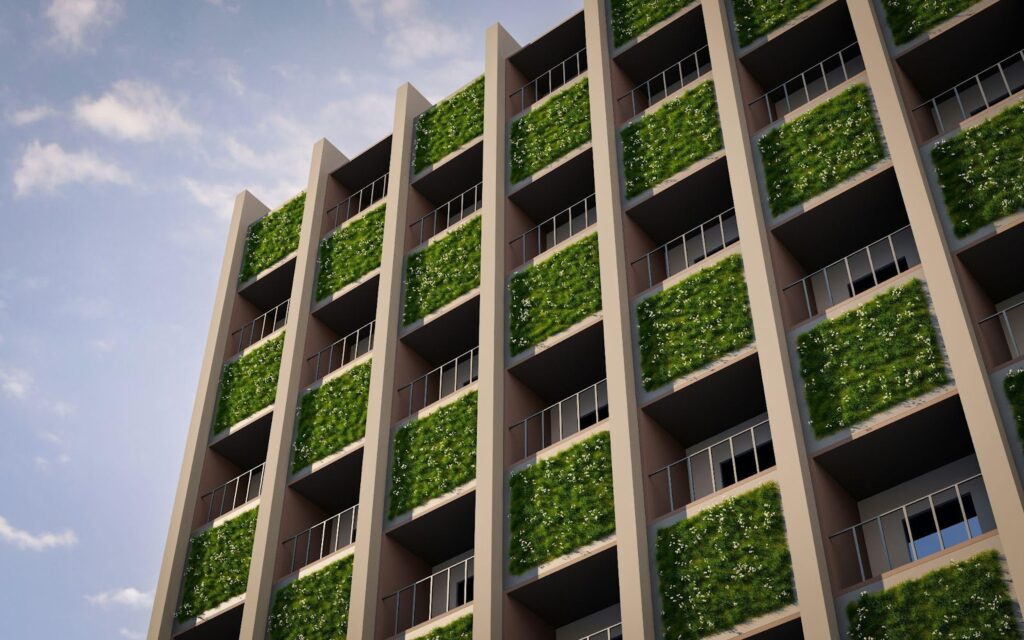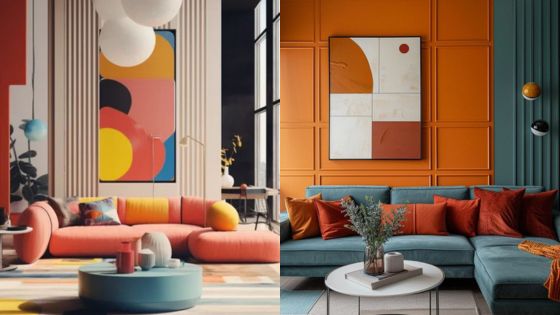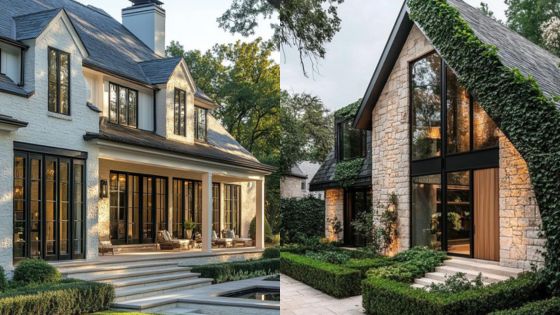
Creating eco-friendly hospitals isn’t just a trend—it’s a necessity. As healthcare facilities consume significant energy and resources, innovative architectural solutions are transforming how we build and operate these spaces. By integrating sustainable materials, renewable energy systems, and smart designs, we can reduce environmental impact while enhancing efficiency and patient care.
From maximizing natural light to incorporating green spaces, these designs go beyond aesthetics. They prioritize energy conservation, better air quality, and even faster patient recovery. Features like biophilic design and eco-conscious construction materials not only lower carbon footprints but also create healing environments that benefit everyone. Additionally, incorporating advanced medical equipment like the everflo oxygen concentrator for sale into these sustainable designs ensures that patient needs are met efficiently while maintaining eco-friendly practices.
As we embrace these advancements, the future of healthcare architecture is clear: sustainability and innovation must go hand in hand. Explore how cutting-edge solutions are shaping hospitals to be greener, healthier, and more cost-efficient here.
Importance Of Eco-Friendly Hospital Design
Eco-friendly hospital design significantly reduces environmental impact, promoting sustainable healthcare practices. Hospitals consume substantial energy, water, and resources, making their ecological footprint large. By integrating sustainable solutions like renewable energy systems and water conservation strategies, we minimize resource depletion and cut greenhouse gas emissions.

These designs also enhance health outcomes for patients and staff. Features such as improved air quality, access to natural light, and non-toxic building materials create healthier indoor environments. Studies show that such environments can accelerate patient recovery, boost staff productivity, and reduce stress.
Economic advantages further highlight the value of eco-friendly hospital architecture. Hospitals save on operational costs by adopting energy-efficient systems, utilizing recycled materials, and implementing wastewater recycling. Over time, these savings contribute to financial sustainability while reducing environmental strain.
Ultimately, integrating eco-friendly design into healthcare facilities supports environmental responsibility, improves well-being, and ensures financial sustainability—all vital elements in the future of healthcare infrastructure.
Key Principles Of Sustainable Architecture
Sustainable architecture incorporates eco-friendly practices to minimize environmental impact and optimize operational efficiency. In healthcare, these principles ensure hospitals are both functional and environmentally responsible.
Energy Efficiency Solutions
Energy efficiency reduces hospital energy consumption, lowering operational costs and carbon emissions. Incorporating renewable energy sources like solar panels, wind turbines, and geothermal systems supports sustainability. Efficient HVAC systems improve building insulation and maintain optimal indoor temperatures. Advanced technologies such as building automation systems and fault-detection diagnostics enable precise control of energy usage. Additionally, leveraging natural light through large windows and skylights reduces dependency on artificial lighting while promoting a healthier environment for patients and staff. Simple practices, including powering down unused equipment, further enhance energy conservation.
Use Of Sustainable Materials
Sustainable materials reduce environmental impact during hospital construction and maintenance. Using low-VOC paints, recycled steel, and sustainably sourced wood ensures eco-friendly and long-lasting results. Durable materials requiring minimal upkeep contribute to cost savings over time. Green building design integrates biophilic elements such as green roofs and living walls, improving air quality and fostering a connection with nature. Incorporating modular construction methods promotes material efficiency by minimizing waste. Hospitals prioritizing eco-conscious sourcing strengthen their commitment to sustainable healthcare environments.
Water Conservation Technologies
Water conservation is critical in hospitals due to high daily consumption. Installing low-flow fixtures, such as faucets and toilets, reduces water usage significantly. Rainwater harvesting systems capture and store rainwater for non-potable applications like landscaping, conserving freshwater resources. Advanced wastewater recycling systems enable reuse of treated water for facility operations. Incorporating native plants in landscaping decreases irrigation needs while maintaining aesthetic appeal. Combining efficient technologies with mindful practices cuts water usage and reduces costs, supporting environmental stewardship in healthcare settings.
Innovative Architectural Approaches
Harnessing modern architectural strategies is transforming hospitals into eco-friendly spaces designed for sustainability and improved healthcare outcomes. These approaches prioritize patient-centric care and operational efficiency while reducing environmental impact.

Biophilic Design For Patient Wellbeing
Biophilic design connects patients and staff to the natural world within hospital settings. Features like large windows, natural materials, and indoor greenery create calming environments and improve air quality. Maximizing natural light enhances sleep cycles and mood while fostering a sense of tranquility. Incorporating green spaces, such as rooftop gardens or courtyard vegetation, positively influences mental and physical health. These designs align with healthcare goals by promoting faster recovery, reducing stress, and improving overall satisfaction.
Flexible And Adaptive Spaces
Designing flexible spaces allows hospitals to adapt to evolving needs. Modular layouts and multi-purpose areas accommodate sudden patient surges, such as during pandemics or emergencies, without overhauling infrastructure. Adaptive designs integrate mobile partitions, convertible rooms, and streamlined furnishings to maximize functionality. By supporting effective space utilization, these solutions enhance efficiency and reduce resource strain, aligning with eco-friendly and patient-focused healthcare objectives.
Integration Of Renewable Energy Systems
Renewable energy solutions minimize hospitals’ reliance on fossil fuels, cutting operating costs and carbon emissions. Incorporating solar panels, wind turbines, or geothermal systems ensures sustainable energy supply and resilience during outages. For short-term needs, portable battery energy storage systems (BESS) offer clean and reliable power, reducing dependency on diesel generators. According to the National Renewable Energy Laboratory, hospitals using onsite systems can reduce energy expenses by up to 30%, making renewable energy integration both an environmental and economic advantage.
Challenges And Strategies
Eco-friendly hospital design presents unique challenges, but strategic approaches ensure effective implementation while maintaining high standards of care.
Overcoming Implementation Barriers
Adopting sustainable architectural solutions requires addressing key challenges like high upfront costs, resistance to change, and technical limitations. Energy-efficient systems and renewable energy installations, such as solar or wind power, often demand significant initial investment, deterring stakeholders focused on short-term gains. To mitigate this, we can highlight long-term operational savings through energy cost reductions.
Resistance to change emerges from established operational norms among staff and administrators. Conducting training sessions on the benefits of eco-friendly designs can alleviate concerns. Technical barriers, including limited expertise in sustainable construction practices, can be overcome by collaborating with experienced architects and engineers specializing in green healthcare design.
Aligning With Sustainability Standards
Aligning hospital designs with sustainability standards like LEED and the Green Guide for Health Care ensures measurable environmental performance. Certification benchmarks promote efficient resource use, use of sustainable materials, and superior indoor air quality. By integrating water-saving technologies like low-flow fixtures and prioritizing renewable energy systems, we meet or exceed these standards.
Structured guidelines provided by such certifications also facilitate design implementation, offering actionable insights and consistent goals. These certifications benefit hospitals by bolstering environmental credibility, attracting patients and staff who prioritize eco-conscious values. They also create a clear roadmap for achieving and maintaining environmental efficiency.
Case Studies Of Successful Eco-Friendly Hospitals
Several hospitals worldwide are setting benchmarks with sustainable architectural innovations. These case studies showcase how integrating eco-friendly solutions enhances environmental and operational outcomes.
Singapore’s Biophilic Hospital
A hospital in Singapore incorporates biophilic design by integrating green walls, rooftop gardens, and extensive natural lighting. These features improve indoor air quality, reduce reliance on artificial lighting, and support patient recovery through stress reduction. The adoption of rainwater harvesting systems and energy-efficient HVAC technologies further minimizes water and energy consumption.
Scandinavian Low-Energy Hospital
In Scandinavia, one healthcare facility exemplifies ultra-low energy use through advanced insulation, geothermal heating, and solar panel installations. The hospital’s design emphasizes minimal reliance on fossil fuels, significantly cutting carbon emissions. Additionally, zones within the hospital use smart building automation systems to optimize energy usage while maintaining high hygiene standards.
California’s Resource-Efficient Facility
A leading hospital in California implements water conservation strategies, including low-flow fixtures and graywater recycling systems. Waste reduction programs focus on reducing single-use plastics and increasing the use of recycled medical supplies. The facility incorporates a LEED-certified design with eco-friendly construction materials, such as recycled steel and low-VOC paints, ensuring reduced environmental impact during and after construction.
Australian Green Rooftop Healthcare
An Australian hospital features extensive rooftop solar panels combined with innovative green roofs. The energy produced offsets operational costs while the roof vegetation enhances insulation, reducing cooling demands. Natural ventilation systems improve indoor airflow, creating a healthier environment for patients and staff.
These examples illustrate how environmentally responsible designs benefit hospitals economically and ecologically. By adopting renewable energy, optimizing resource use, and integrating sustainable materials, these hospitals lead the way in reducing environmental footprints while improving patient experiences.
Future Trends In Eco-Friendly Hospital Design
Sustainable hospital design is evolving with new trends focusing on technology, materials, and processes that enhance environmental responsibility. Smart technologies are increasingly optimizing energy and resource management. Automated lighting systems, occupancy sensors, and building management systems reduce energy waste, while AI-driven tools facilitate predictive maintenance for critical infrastructure like HVAC systems.
Modular and prefabricated construction methods are gaining traction, offering shorter construction timelines and reduced material waste. These techniques ensure adaptability, allowing hospitals to scale or modify spaces according to changing healthcare demands. For instance, prefabricated panels with recycled content lower the environmental impact during construction.
The use of biophilic and patient-centered design continues to grow. Integrating elements like natural light, indoor greenery, and nature-inspired decor enhances well-being and accelerates recovery times. Large windows, rooftop gardens, and open layouts create healthier environments by reducing reliance on artificial lighting and promoting air circulation.
Renewable energy systems are critical in shaping energy-independent hospitals. Facilities are incorporating solar panels, wind turbines, and geothermal systems to minimize energy costs and carbon emissions. Coupled with energy-efficient technologies like LED lighting and high-performance insulation, these solutions ensure reduced dependency on non-renewable resources.
Resilient and adaptable designs are pivotal for future healthcare needs. Hospitals are creating flexible layouts that can handle patient surges, as seen during pandemics. Water conservation technologies, including rainwater harvesting and graywater reuse systems, address the increasing strain on global water resources.
A holistic approach to sustainability extends to procurement practices. Sourcing materials with a low environmental footprint, such as reclaimed wood and low-VOC products, complements sustainable construction. Implementing these trends positions hospitals as leaders in environmental stewardship while prioritizing patient care and operational efficiency.
- 1share
- Facebook0
- Pinterest1
- Twitter0



